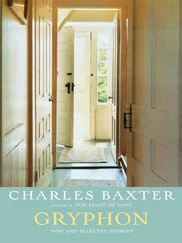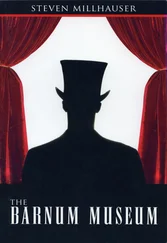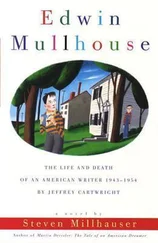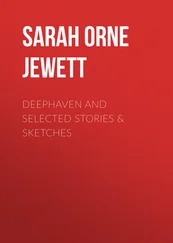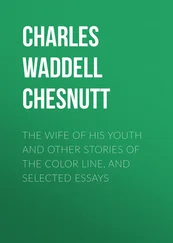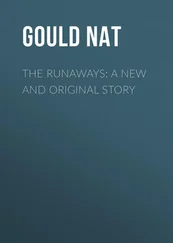4
The enemies of the Barnum Museum say that its exhibits are fraudulent; that its deceptions harm our children, who are turned away from the realm of the natural to a false realm of the monstrous and fantastic; that certain displays are provocative, erotic, and immoral; that this temple of so-called wonders draws us out of the sun, tempts us away from healthy pursuits, and renders us dissatisfied with our daily lives; that the presence of the museum in our city encourages those elements which, like confidence men, sharpers, palmists, and astrologers, prey on the gullible; that the very existence of this grotesque eyesore and its repellent collection of monstrosities disturbs our tranquillity, undermines our strength, and reveals our secret weakness and confusion. Some say that these arguments are supported and indeed invented by the directors of the museum, who understand that controversy increases attendance.
5
In one hall there is a marble platform surrounded by red velvet ropes. In the center of the platform a brown man sits cross-legged. He has glossy black eyebrows and wears a brilliant white turban. Before him lies a rolled-up carpet. Bending forward from the waist, he unrolls the carpet with delicate long fingers. It is about four feet by six feet, dark blue, with an intricate design of arabesques in crimson and green. Each of the two ends bears a short white fringe. The turbaned man stands up, steps to the center of the carpet, turns to face one of the fringed ends, and sits down with his legs crossed. His long brown hands rest on his lap. He utters two syllables, which sound like “ah-lek” or “ahg-leh,” and as we watch, the carpet rises and begins to fly slowly about the upper reaches of the hall. Unlike the Hall of Mermaids, this hall is brightly lit, as if to encourage our detailed observation. He flies back and forth some thirty feet above our heads, moving in and out among the great chandeliers, sometimes swooping down to skim the crowd, sometimes rising to the wide ledge of a high window, where he lands for a moment before continuing his flight. The carpet does not lie stiffly beneath him, but appears to have a slight undulation; the weight of his seated body shows as a faint depression in the carpet’s underside. Sometimes he remains aloft for an entire afternoon, pausing only on the shadowy ledges of the upper windows, and because it is difficult to strain the neck in a continual act of attention, it is easy to lose sight of him there, high up in the great spaces of the hall.
6
In the rooms and halls of the Barnum Museum there is often an atmosphere of carnival, of adventure. Wandering jugglers toss their brightly colored balls in the air, clowns jump and tumble, the peanut vendors in their red-white-and-blue caps shout for attention; here and there, in roped-off corners, an artist standing at an easel paints a picture of a bird that suddenly flies from the painting and perches on a window ledge, a magician shakes from his long black hat a plot of grass, an oak tree hung with colored lanterns, and white chairs and tables disposed beneath the branches. In such a hall it is difficult to know where to turn our eyes, and it is entirely possible that we will give only a casual glance to the blue-and-yellow circus cage in the corner where, tired of trailing his great wings in the straw, the griffin bows his weary head.
7
One school of thought maintains that the wonders of the Barnum Museum deliberately invite mechanical explanations that appear satisfactory without quite satisfying, thereby increasing our curiosity and wonder. Thus some claim that the flying carpet is guided by invisible wires, others argue that it must conceal a small motor, still others insist that it is controlled electronically from within the marble platform. One branch of this school asserts that if in fact the explanation is mechanical, then the mechanism is more marvelous than magic itself. The mermaids are readily explained as real women with false fish-tails covering their bottom halves, but it must be reported that no one has ever been able to expose the imposture, even though photographs are permitted on Sundays from three o’clock to five. The lower halves, which all of us have seen, give every appearance of thickness and substance, and behave in every way like fish bodies; no trace of concealed legs is visible; the photographs reveal a flawless jointure of flesh and scale. Many of us who visit the Hall of Mermaids with a desire to glimpse naked breasts soon find our attention straying to the lower halves, gleaming mysteriously for a moment before vanishing into the black pool.
8
There are three subterranean levels of the Barnum Museum. The first resembles any of the upper levels, with the exception that there are no windows and that no sunlight dilutes the glow of the fluorescent ceiling lights. The second level is darker and rougher; old-fashioned gas lamps hiss in the air, and winding corridors lead in and out of a maze of chambers. Crumbling stone stairways lead down to the third level. Here the earthen paths are littered with stones, torches crackle on the damp stone walls, bands of swarthy dwarfs appear suddenly and scamper into the dark. Moldering signs, of which only a few letters are legible, stand before the dark caves. Few venture more than a step or two into the black openings, which are said to contain disturbing creatures dangerous to behold. Some believe that the passageways of the third level extend beyond the bounds of the upper museum, burrowing their way to the very edges of the city. Now and then along the dark paths an opening appears, with black stairs going down. Some say the stairways of the third level lead to a fourth level, which is pitch black and perilous; to descend is to go mad. Others say that the stairways lead nowhere, continuing down and dizzyingly down, beyond the endurance of the boldest venturer, beyond the bounds of imagination itself.
9
It may be thought that the Barnum Museum is a children’s museum, and it is certainly true that our children enjoy the flying carpet, the griffin in his cage, the winged horse, the homunculus in his jar, the grelling, the lorax, the giant in his tower, the leprechauns, the Invisibles, the great birds with the faces and breasts of women, the transparent man, the city in the lake, the woman of brass. But quite apart from the fact that adults also enjoy these exhibits, I would argue that the Barnum Museum is not intended solely or even primarily for children. For although there are always children in the halls, there are also elderly couples, teenagers, men in business suits, slim women in blue jeans and sandals, lovers holding hands; in short, adults of all kinds, who return again and again. Even if one argues that certain exhibits appeal most directly to children, it may be argued that other exhibits puzzle or bewilder them; and children are expressly forbidden to descend to the third subterranean level and to enter certain tents and pavilions. But the real flaw in the suggestion that the Barnum Museum is a children’s museum lies in the assumption that children are an utterly identical tribe consisting of simple creatures composed of two or three abstract traits, such as innocence and wonder. In fact our children are for the most part shrewd and skeptical, astonished in spite of themselves, suspicious, easily bored, impatient for mechanical explanations. It is not always pleasing to take a child to the Barnum Museum, and many parents prefer to wander the seductive halls alone, in the full freedom of adult yearning, monotony, and bliss.
10
Passing through a doorway, we step into a thick forest and make our way along dark winding paths bordered by velvet ropes. Owls hoot in the nearby branches. The ceiling is painted to resemble a night sky and the forest is illuminated by the light of an artificial moon. We come out onto a moonlit grassy glade. The surrounding wood is encircled by posts joined by velvet ropes; here and there an opening between posts indicates a dark path winding into the trees. It is in the glade that the Invisibles make themselves known. They brush lightly against our arms, bend down the grass blades as they pass, breathe against our cheeks and eyelids, step lightly on our feet. The children shriek in joyful fear, wives cling to their husbands’ arms, fathers look about with uncertain smiles. Now and then it happens that a visitor bursts into sobs and is led quickly away by a museum guard. Sometimes the Invisibles do not manifest themselves, and it is only when the visitor, glancing irritably at his watch, begins to make his way toward one of the roped paths, that he may feel, suddenly against his hair, a touch like a caress.
Читать дальше


